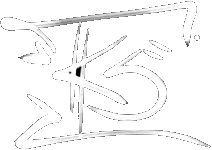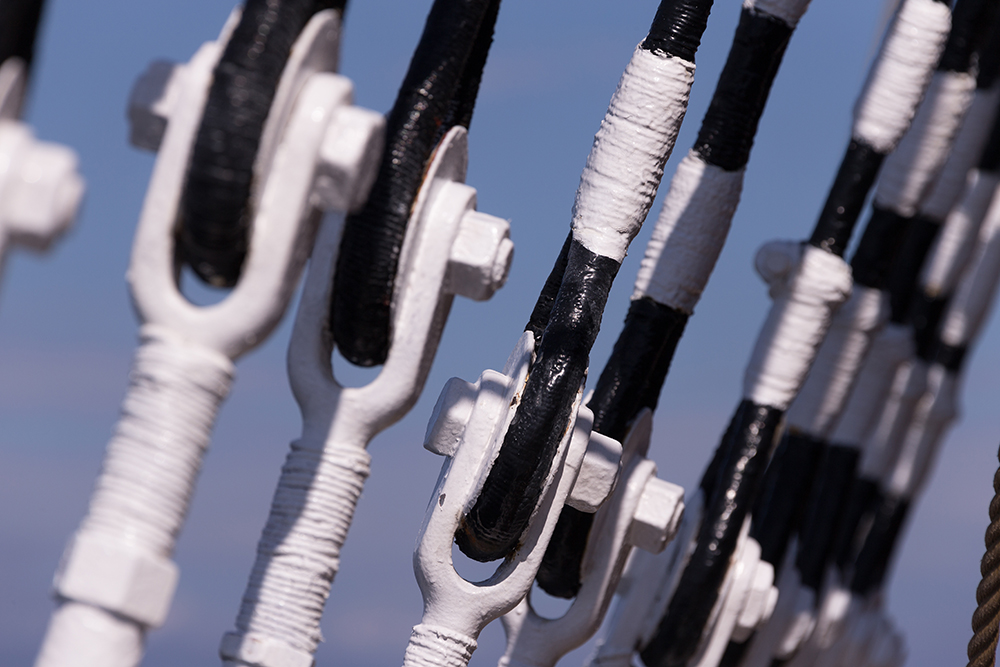
| ... der erste Morgen auf See begrüßt uns frisch und klar und wenn man nicht so viel Land und Schiffe sehen würde, könnte man fast denken, man sei auf einer Crossing ... |
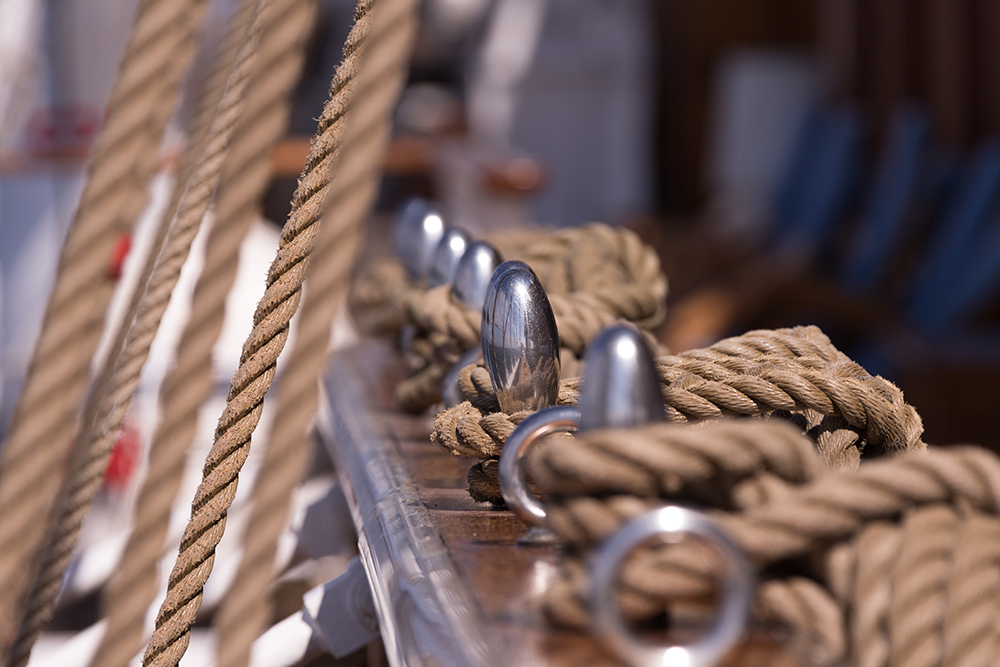
| ... Bilder die ich schon hundertausend Mal geschossen habe, die aber unbedingt dazu gehören und gar nicht oft genug im Kasten landen können ... |
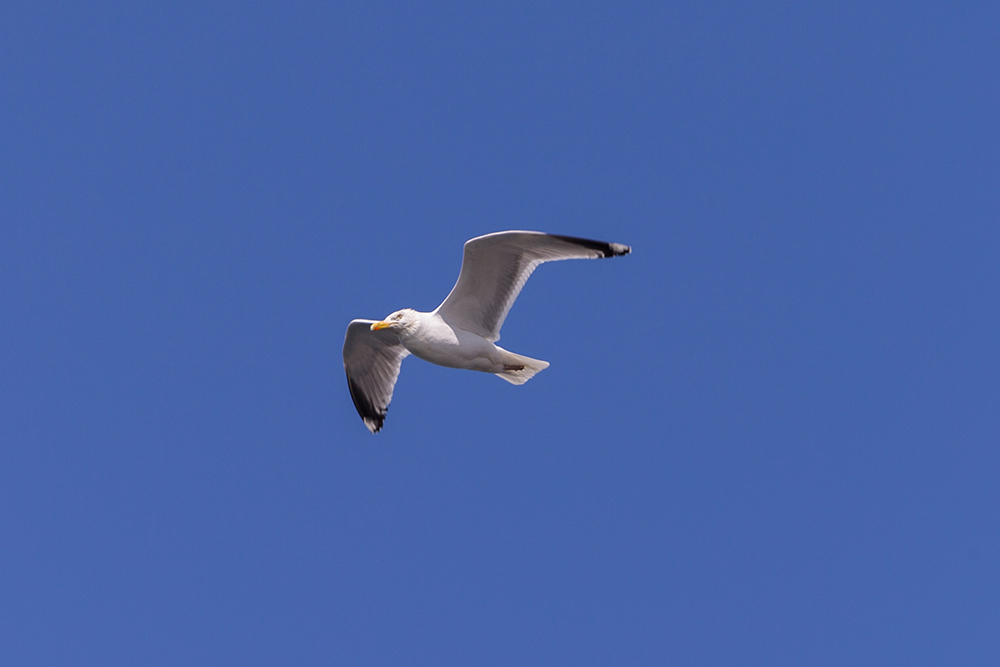
| ... Faoileag gheal ... |
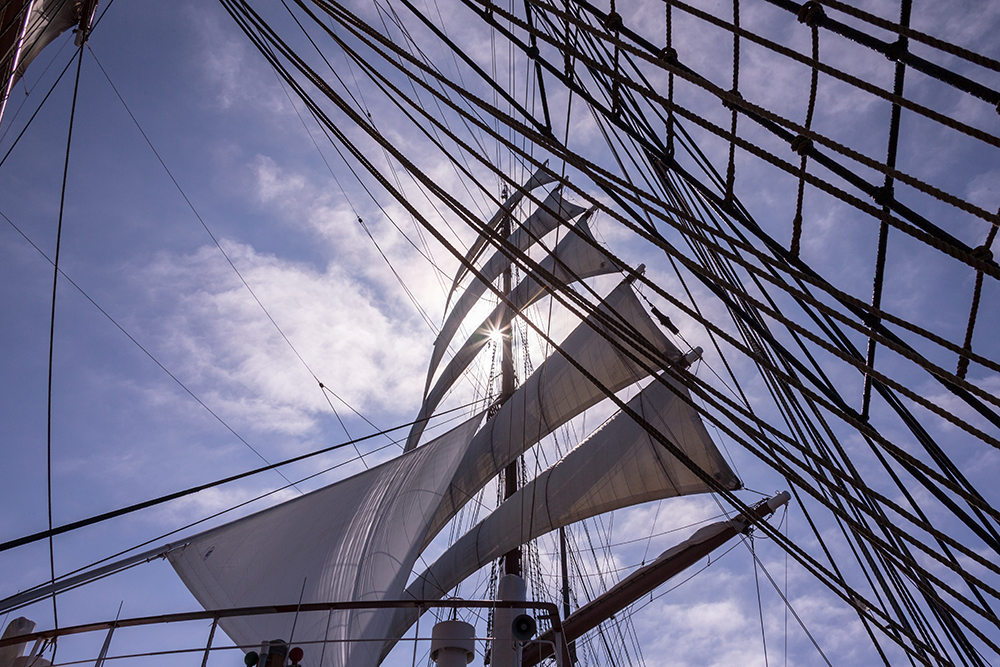
| ... wir sind auf einem Segelschiff, also segeln wir – wenn auch nur für ein paar wenige Stunden, weil sich das bis zum Einlaufen in Aberdeen nun wirklich nicht lohnt – aber was tut man nicht alles für das Wohl der Gäste ;-))) |
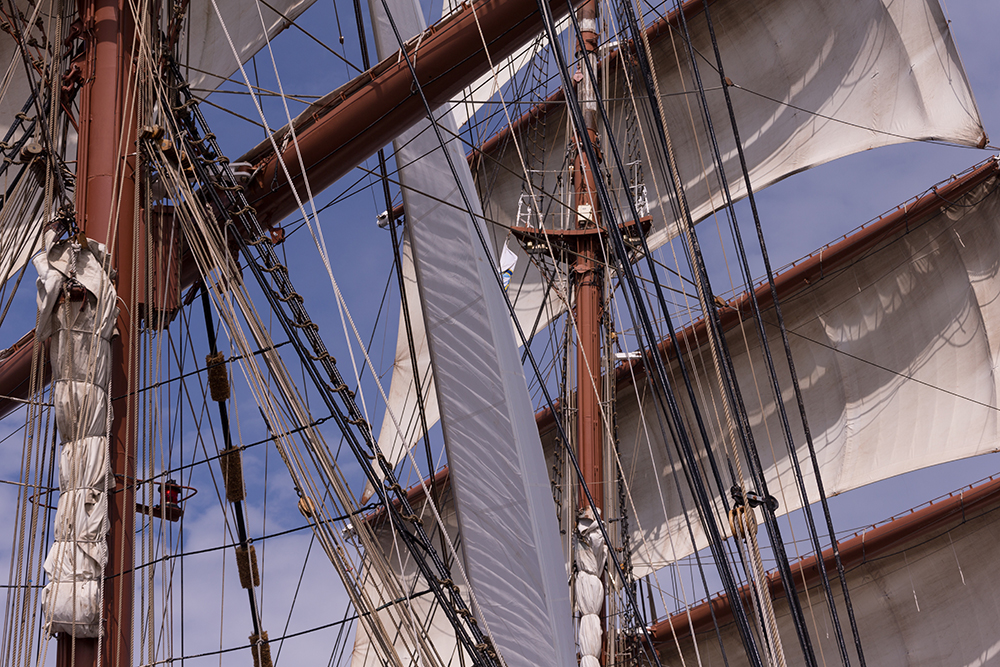
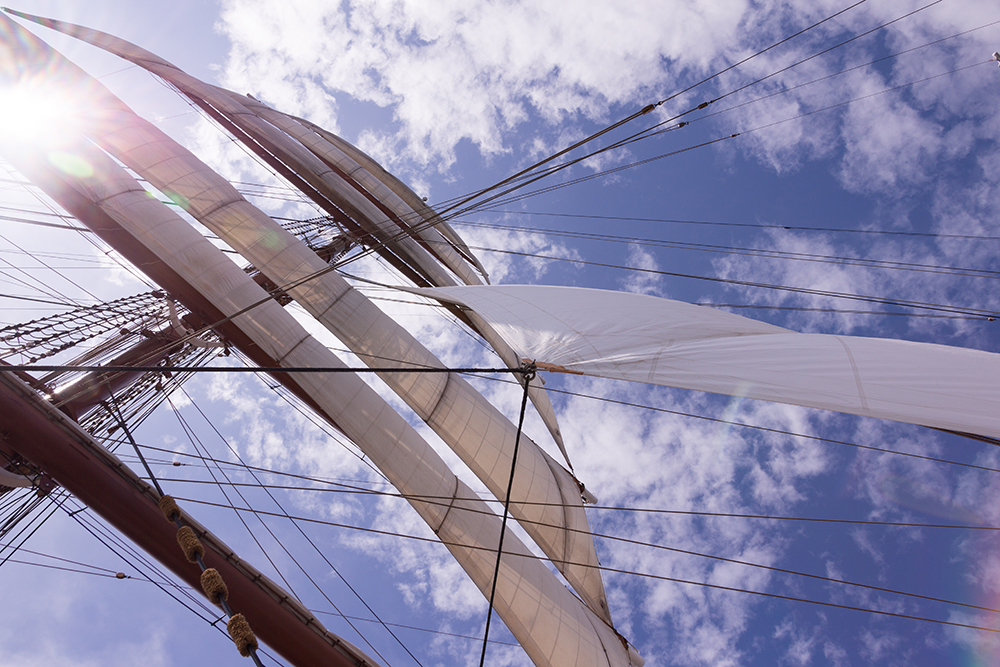
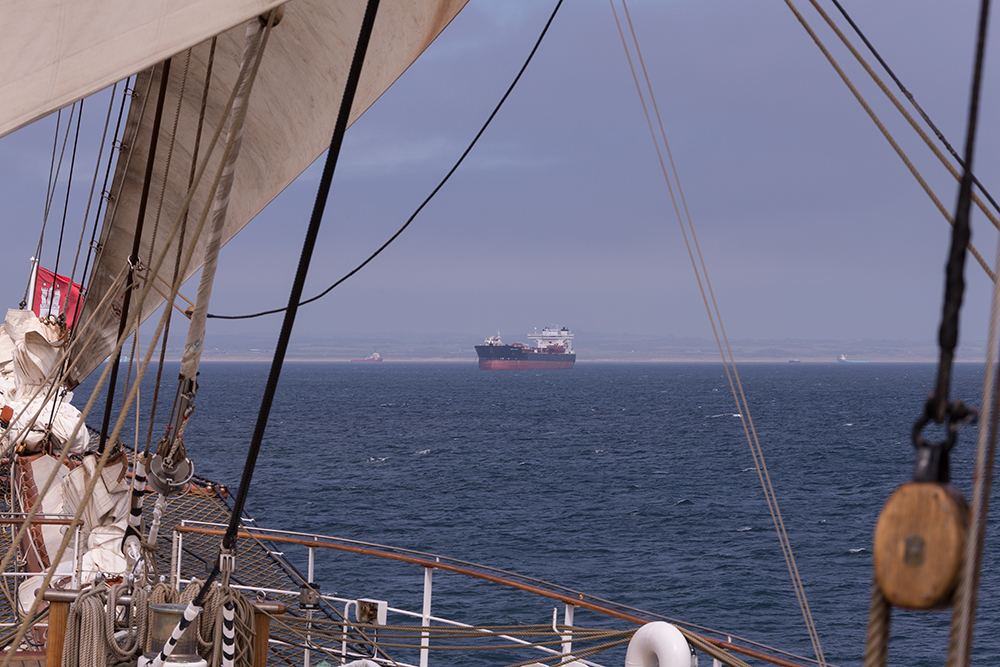
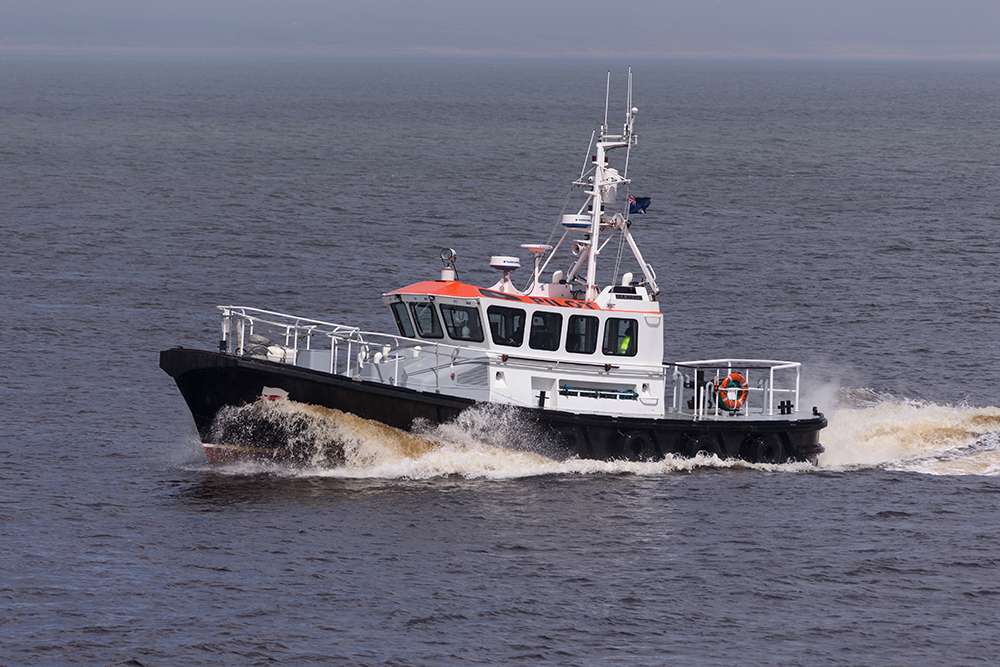
| ... der Lotse kommt ... |
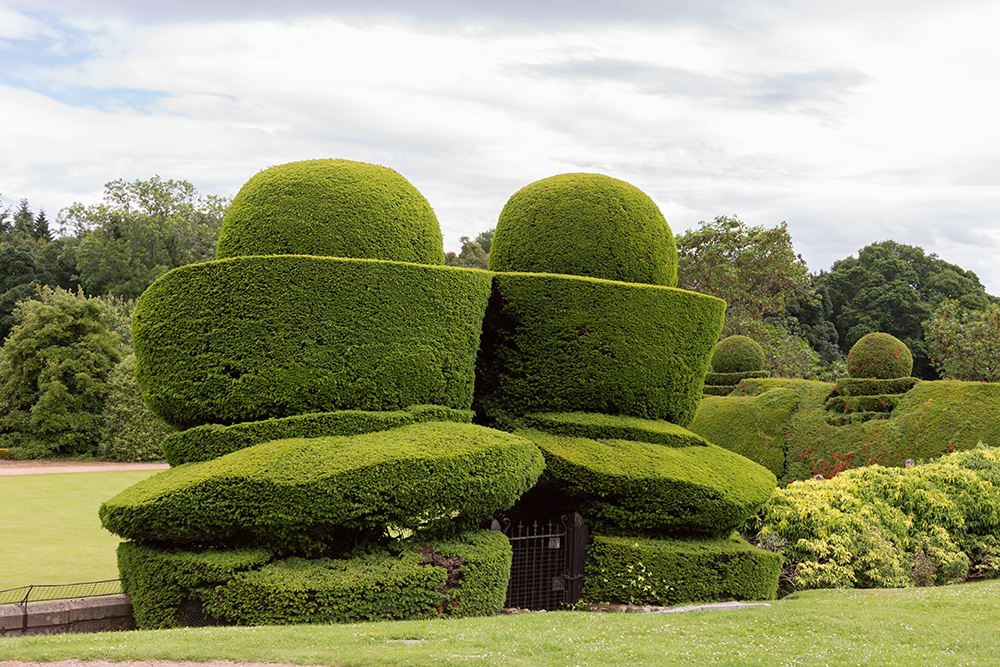
| ... der Ausflug führt uns zuerst nach Crathes Castle – zum Schloss gehören tolle Garten- und Parkanlagen mit gigantischen Eibenhecken, deren ältesten Pflanzen zu Beginn des 18. Jahrhunderts gepflanzt wurden ... irre ... |
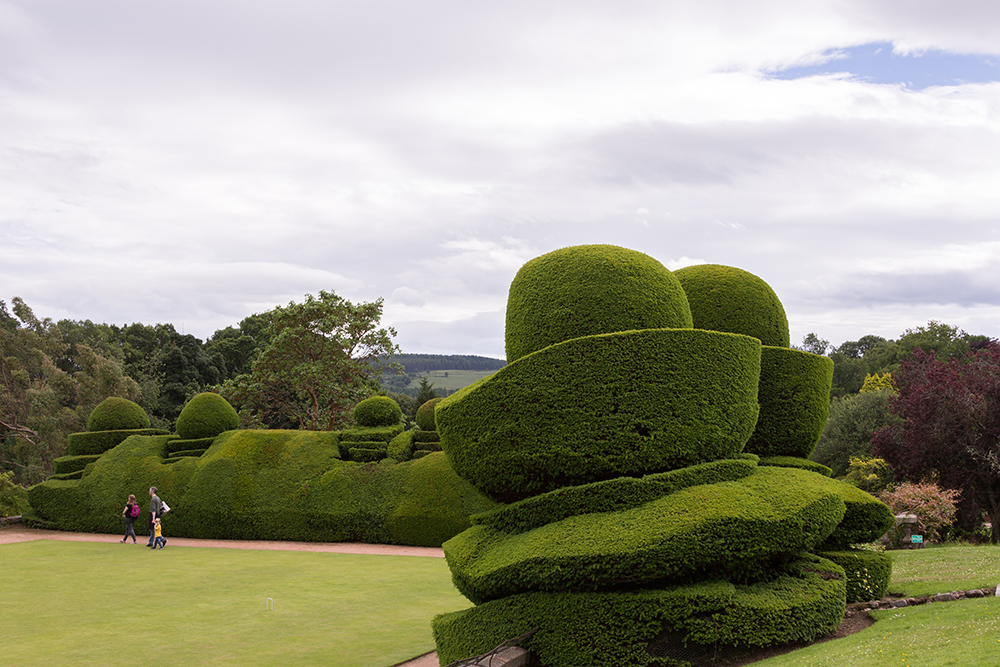
| ... mal ganz abgesehen davon, was das für eine Arbeit ist und mit was für Gerüsten die Pflege der Hecken überhaupt funktionieren kann, haben die ja nun auch das Wetter von drei Jahrhunderten überdauert ... |
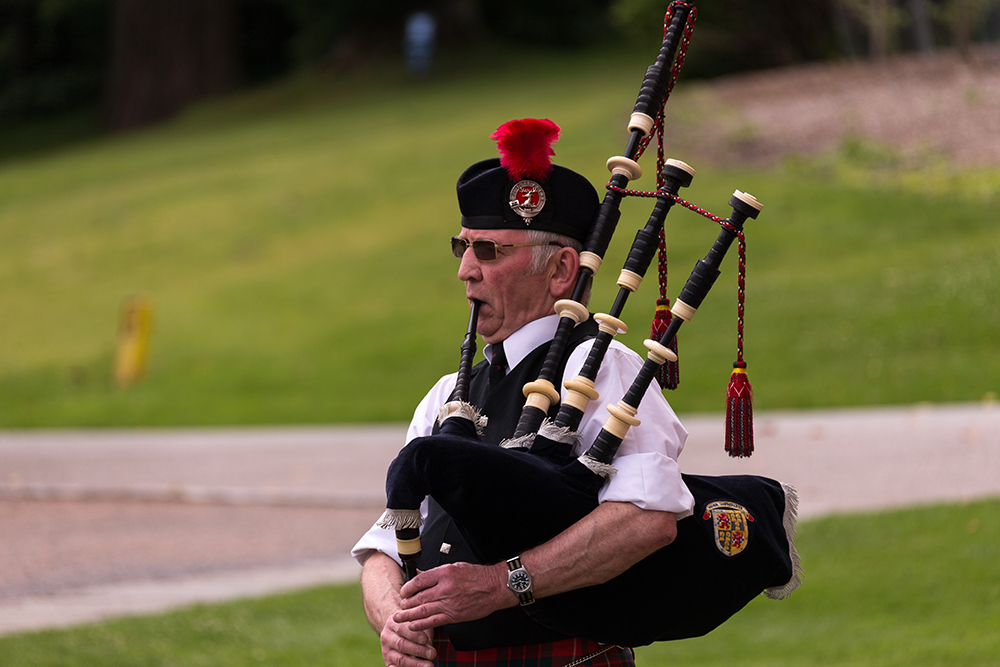
| ... was tut man nicht alles für die vielen Touristen ;-)) |
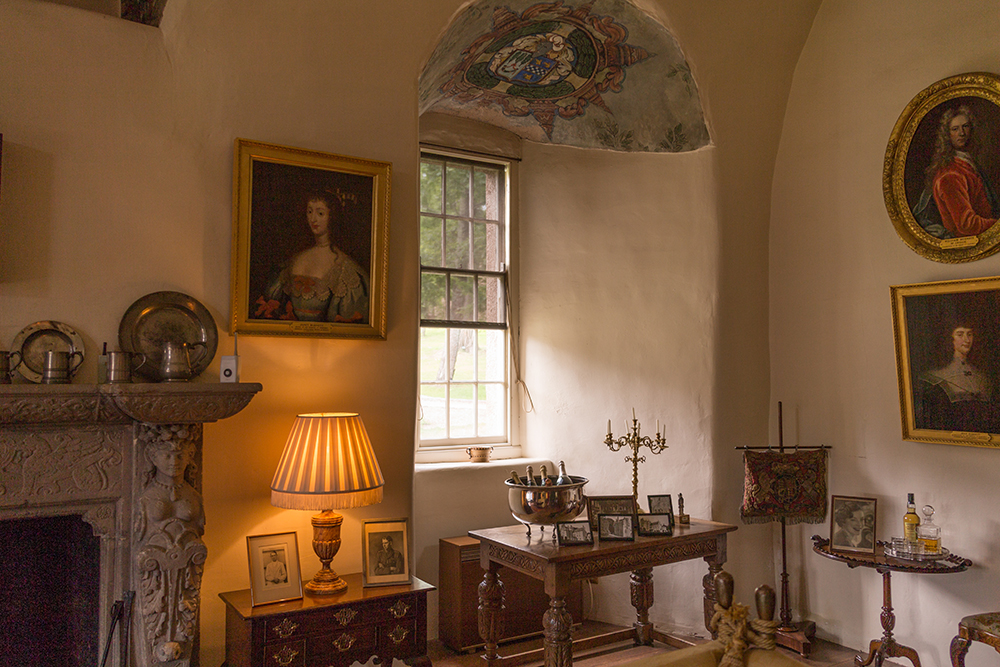
| ... Crathes Castle wurde in der zweiten Hälfte des 16. Jahrhunderts von den damaligen Landbesitzern, der Familie Burnett of Leys, erbaut. Die Familie war in der Gegend seit den Zeiten von Robert the Bruce ansässig, der 1323 Alexander de Burnard Landbesitz bei Banchory und das Amt eines königlichen Försters verliehen hatte ... |
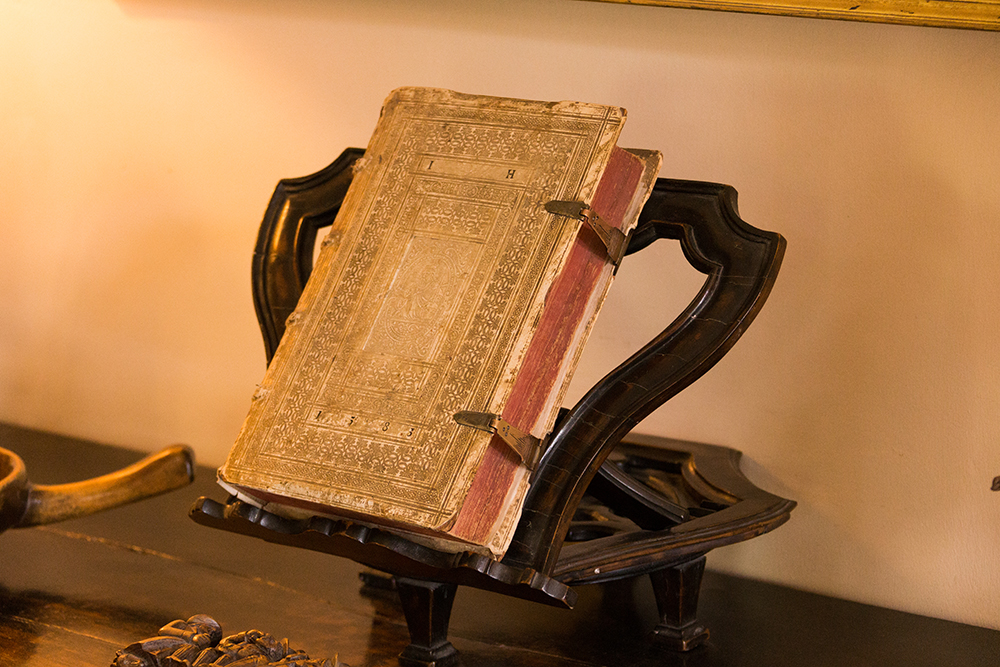
| ... bis zur Mitte des 16. Jahrhunderts war die Familie auf einem Crannog im inzwischen trockengelegten Loch of Leys nördlich von Banchory ansässig. 1553 begann der Bau von Crathes Castle als neuem Familiensitz unter Alexander Burnett of Leys, 9. Lord of Leys. Fertiggestellt wurde die Anlage 1596 unter seinem gleichnamigen Urenkel, dem 12. Lord of Leys. Die Familie Burnett vermied es, sich in die diversen schottischen Konflikte des 16. bis 18. Jahrhunderts einzumischen, Crathes Castle blieb daher von militärischen Aktionen weitgehend unbehelligt. Lediglich 1644 musste der damalige Besitzer dem anrückenden James Graham, 1. Marquess of Montrose, die Tore öffnen ... |
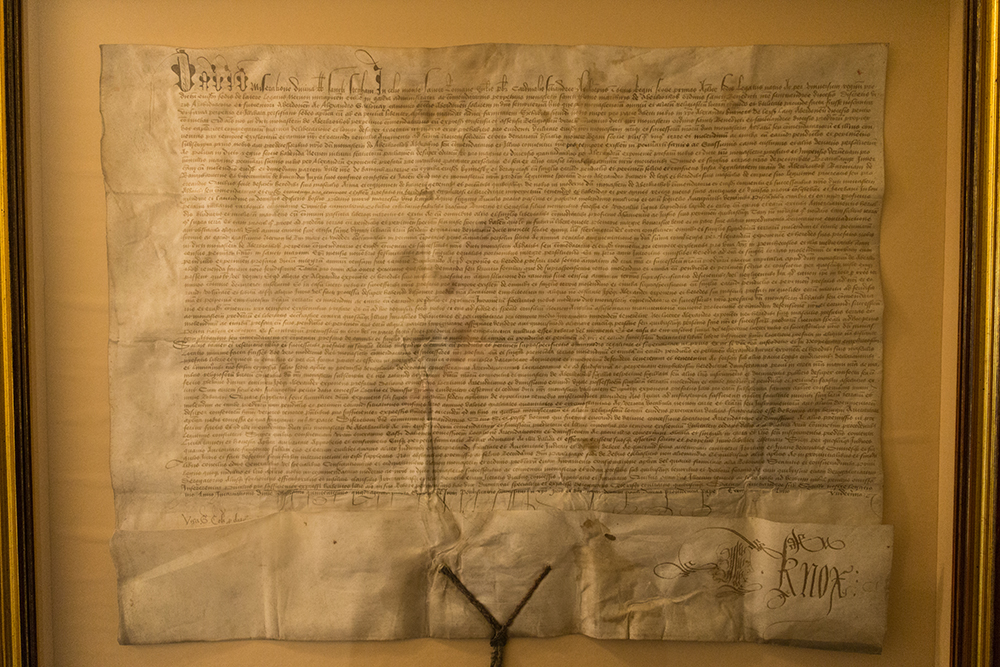
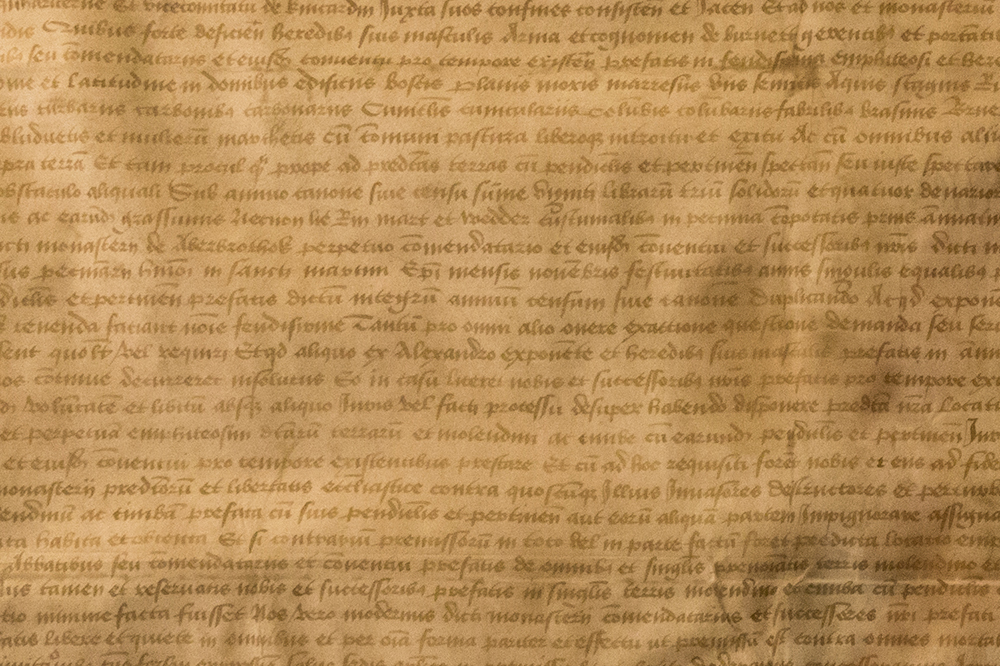
| ... da fragt sich der Nutzer von Diktierfunktion und Tastatur doch wirklich, wie man ohne geeignete Mont Blanc Feder so gleichmäßig, fehler- und einwandfrei schreiben konnte – RESPECT!!! ... |
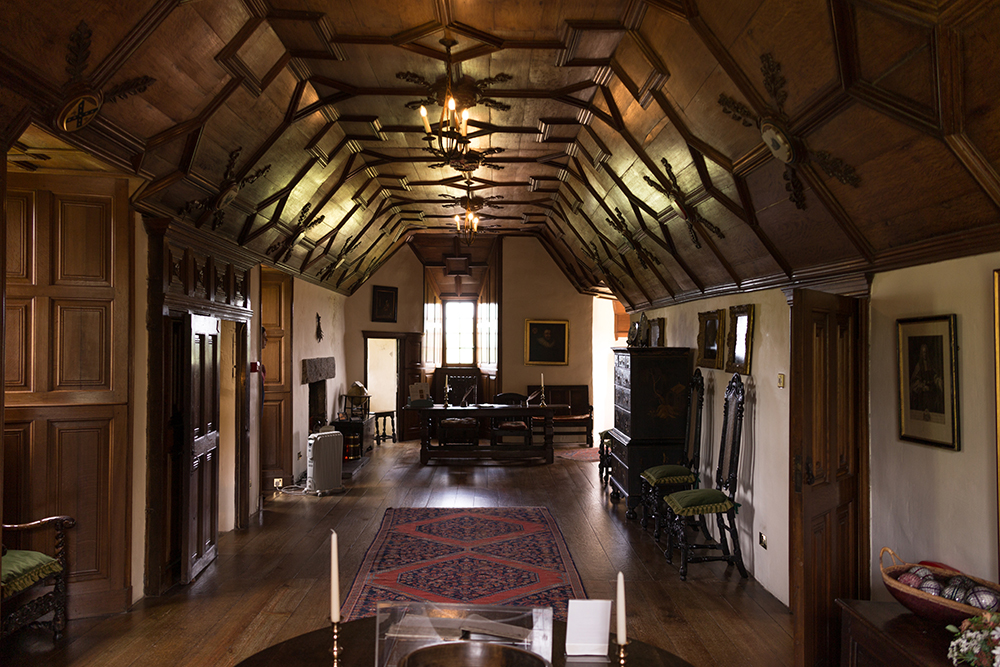
| ... das ursprüngliche Tower House wurde in den 1680er Jahren unter Sir Thomas Burnett, 3. Baronet of Leys, um einen dreistöckigen Ostflügel erweitert, um ausreichend Platz für seine große Familie – mit seiner Frau Margaret hatte er 21 Kinder – zu haben. Nach einem Brand 1966 wurde der Flügel lediglich zweistöckig wieder aufgebaut. Der letzte Besitzer aus der Familie, Sir James Burnett, 13. Baronet of Leys, übertrug Crathes Castle und das dazugehörige Anwesen 1951 an den National Trust for Scotland ... |
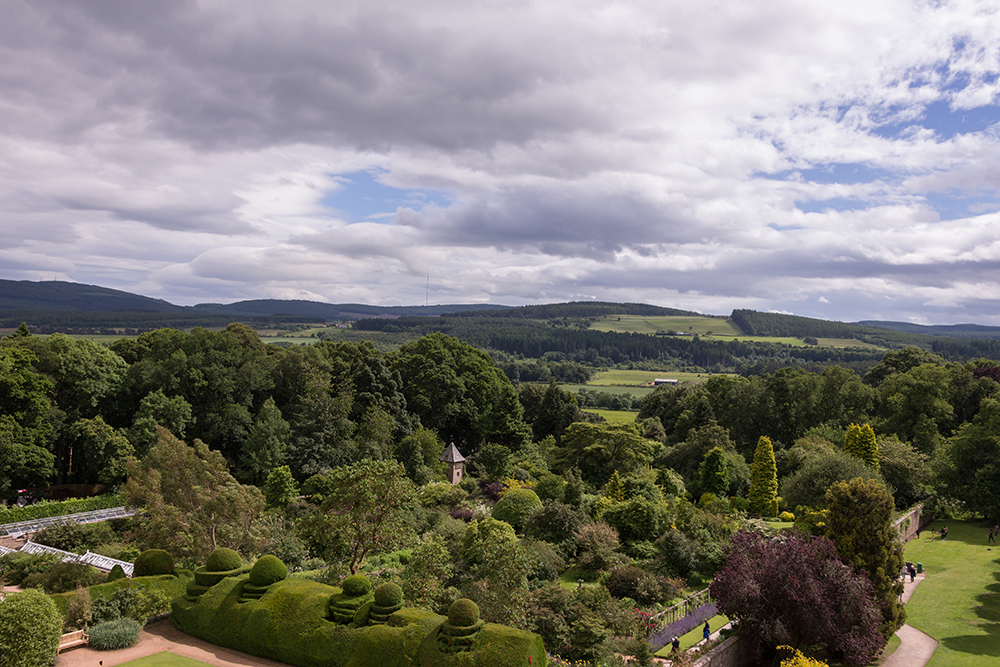
| ... wäre auch nicht schlecht, wenn wir von hier aus weiter in die Highlands könnten ... ein anderes Mal ... |
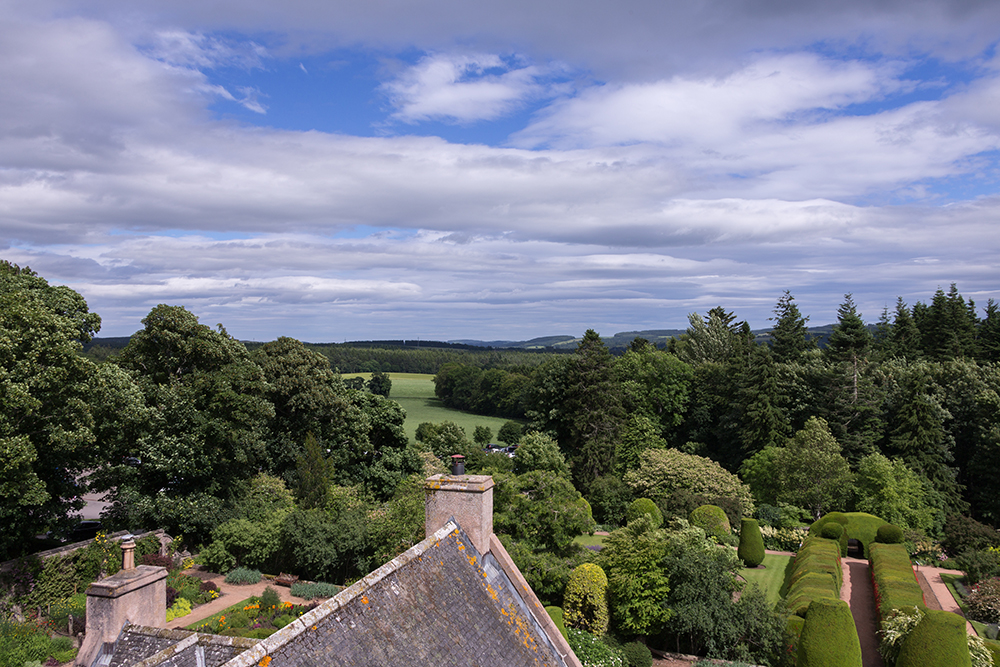
| ... das ursprüngliche Tower House ist sechs Stockwerke hoch. Ergänzt wurde es Ende des 17. Jahrhunderts durch einen einfacher gehaltenen Ostflügel, in dem sich jetzt auch der Eingang befindet. Das Tower House besitzt in seinem obersten Stockwerk an den Ecken auskragende Rundtürmchen, das Dach ist durch diverse Schornsteine und eine aus viktorianischen Zeiten stammende Uhr gekrönt. Im Inneren haben sich in verschiedenen Räumen Deckenmalereien aus der Entstehungszeit Ende des 16. Jahrhunderts erhalten. Zentraler Raum ist die große Halle, die vom Erdgeschoss über Wendeltreppen erreicht werden kann. Die meisten Räume sind noch mit alten Möbeln aus dem ursprünglichen Familienbesitz der Burnetts of Leys erhalten ... |
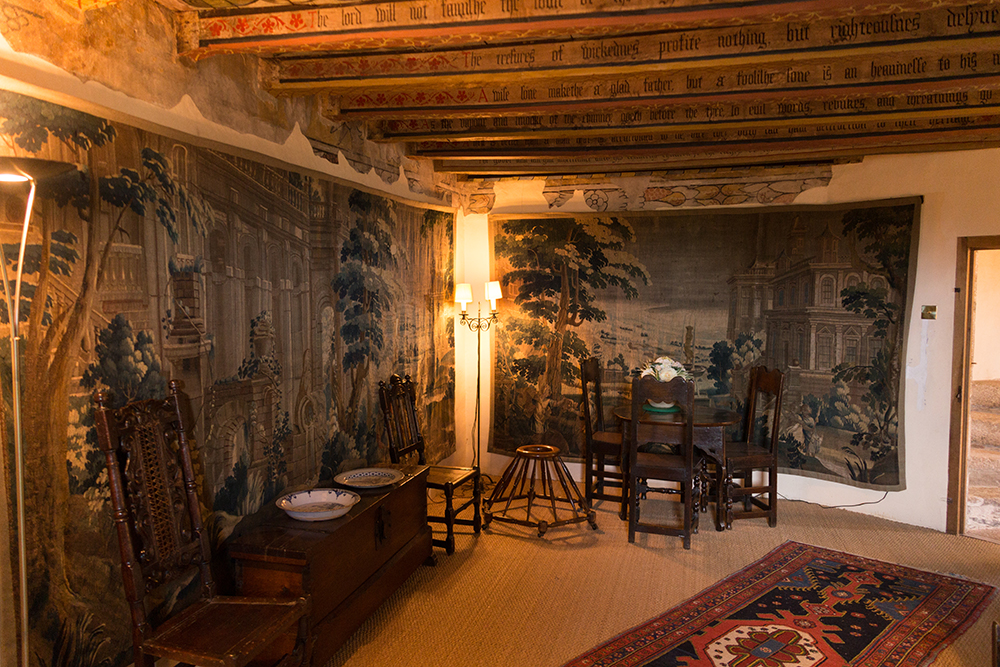
| ... Kinderzimmer – man beachte das „Laufrad“ ... |
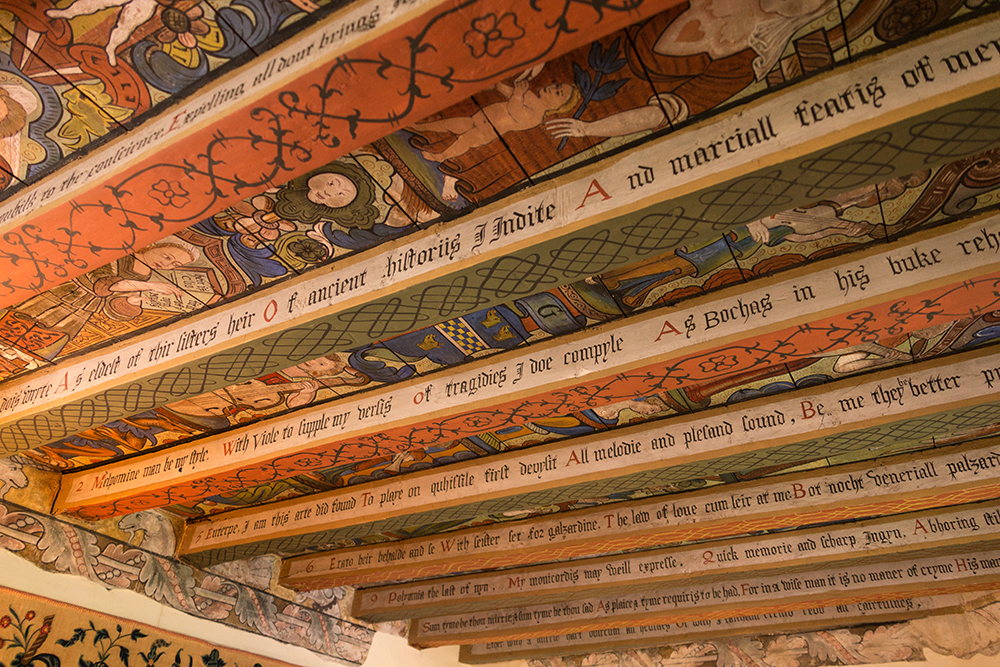
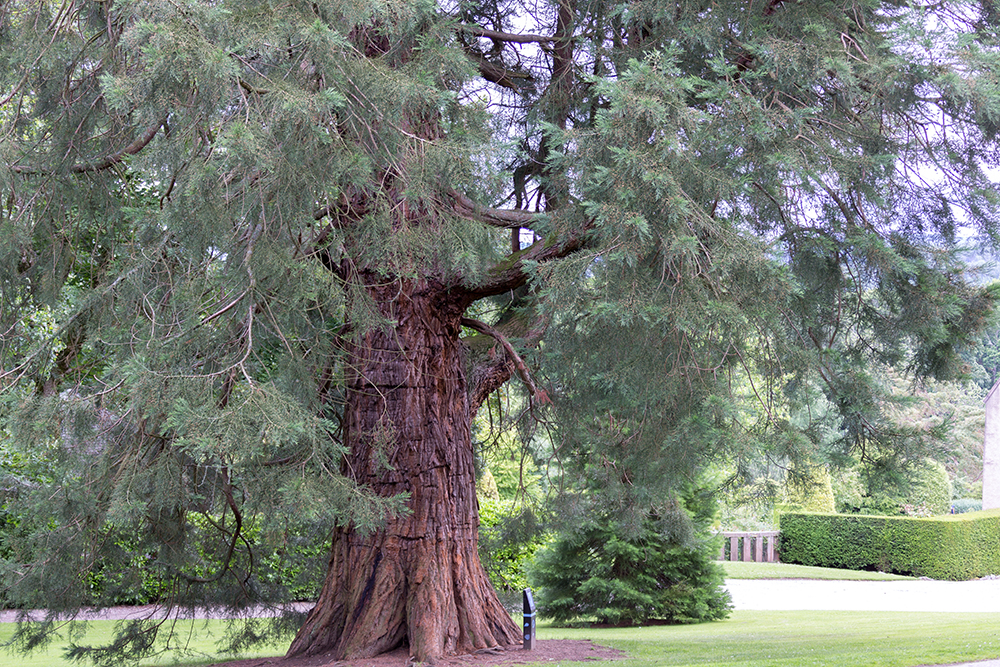
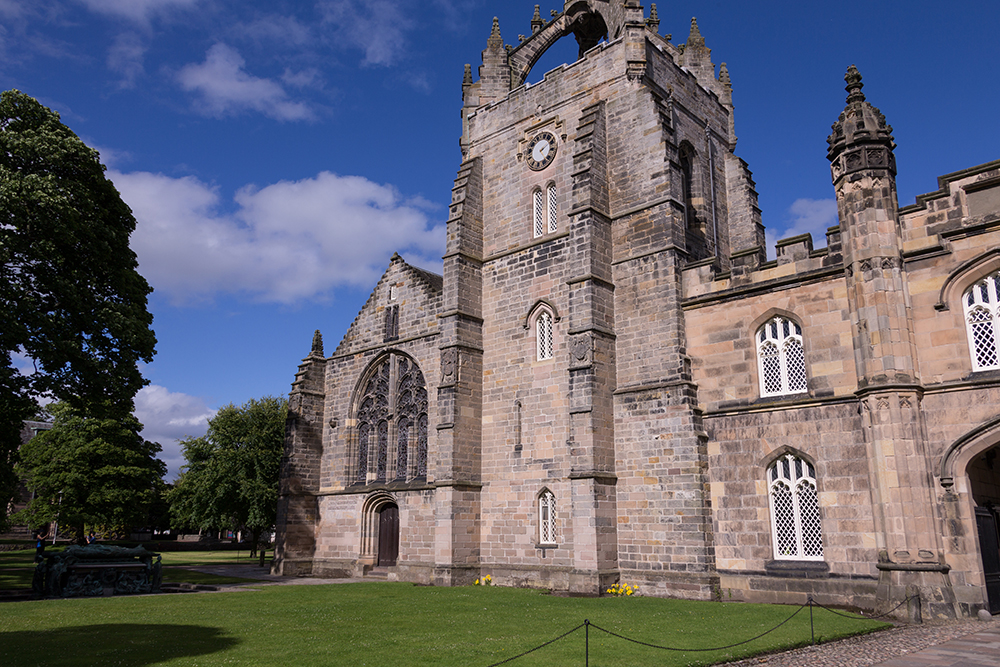
| ... zurück in Aberdeen – Kings College in Old Aberdeen, Scotland, the full title of which is The University and King's Colleg of Aberdeen (Collegium Regium Abredonense), is a formerly independent university founded in 1495 and now an integral part of the University of Aberdeen. Its historic buildings are the centrepiece of the University of Aberdeen's Old Aberdeen campus, often known as the King's or King's College campus. The focal point of the college, as well as its oldest building, is the late 15th century King's College Chapel. A number of other historic buildings remain, with others being subject to renovation and rebuilding in the 18th and 19th centuries. In the early 20th century, a great deal of expansion saw the university buildings increase around the historic college buildings. In the later 20th century, the university expanded dramatically in size, dominating Old Aberdeen and expanding out from the High Street with a number of modern buildings ...
Quelle: https://en.wikipedia.org/wiki/King%27s_College,_Aberdeen |
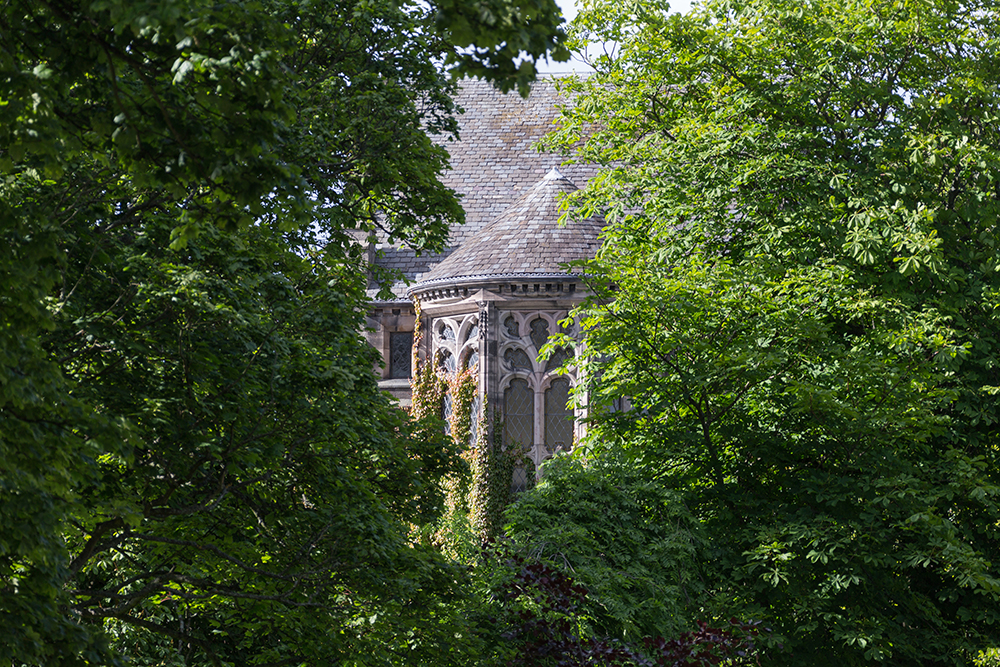
| ... zwischen uralten Bäumen schauen noch viel ältere Gemäuer durch die Blätter, es ist still und man spürt wirklich den Hauch der Geschichte, der durch diesen historischen Teil Aberdeens weht – einfach wunderschön hier ... |
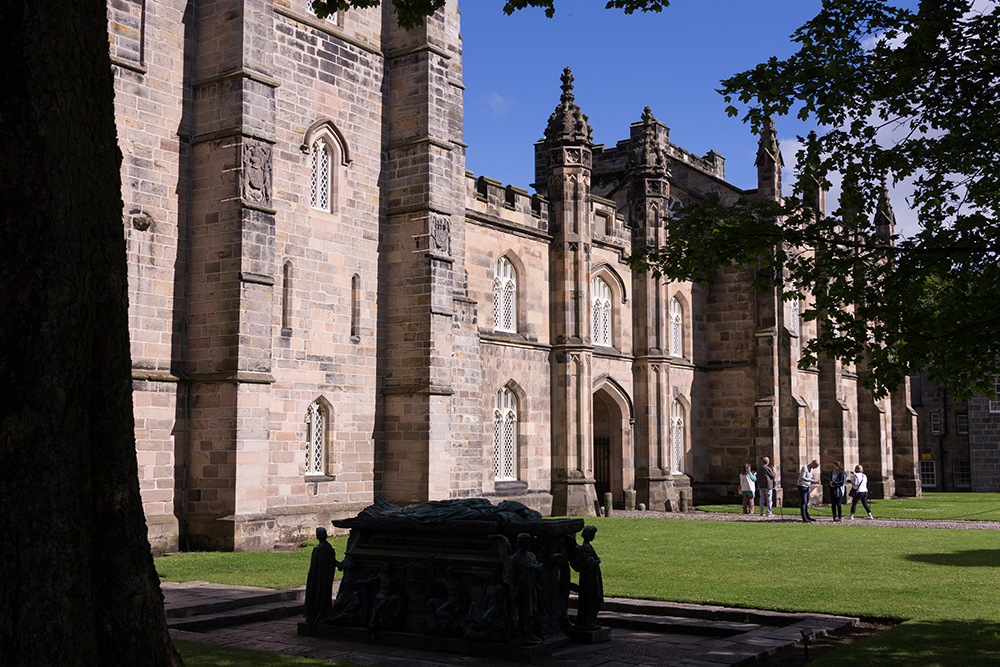
| ... William Elphinstone (1431 – 25 October 1514) was a Scottish statesman, Bishop of Aberdeen and founder of the University of Aberdeen.He w as born in Glasgow, and educated at the High School of Glasgow and then University of Glasgow, taking the degree of M.A. in 1452. After practising for a short time as a lawyer in the church court, he was ordained a priest, becoming rector of St. Michael's Church, Trongate, Glasgow, in 1465. Four years later he went to continue his studies at the University of Paris, where he became reader in Canon law, and then, proceeding to Orléans, became lecturer in the university there. Before 1474 he had returned to Scotland, and was made aademic rector of the university, and official of the see of Glasgow. Further promotion followed, but soon more important duties were entrusted to Elphinstone, who was made Bishop of Ross in 1481. He was a member of the Parliament of Scotland, and was sent by James III of Scotland on diplomatic missions to Louis XI of France and Edward IV of England. In 1483 he was appointed Bishop of Aberdeen, although his consecration was delayed for four years; and he was sent on missions to England, both before and after the death of Richard III of England in 1485. |
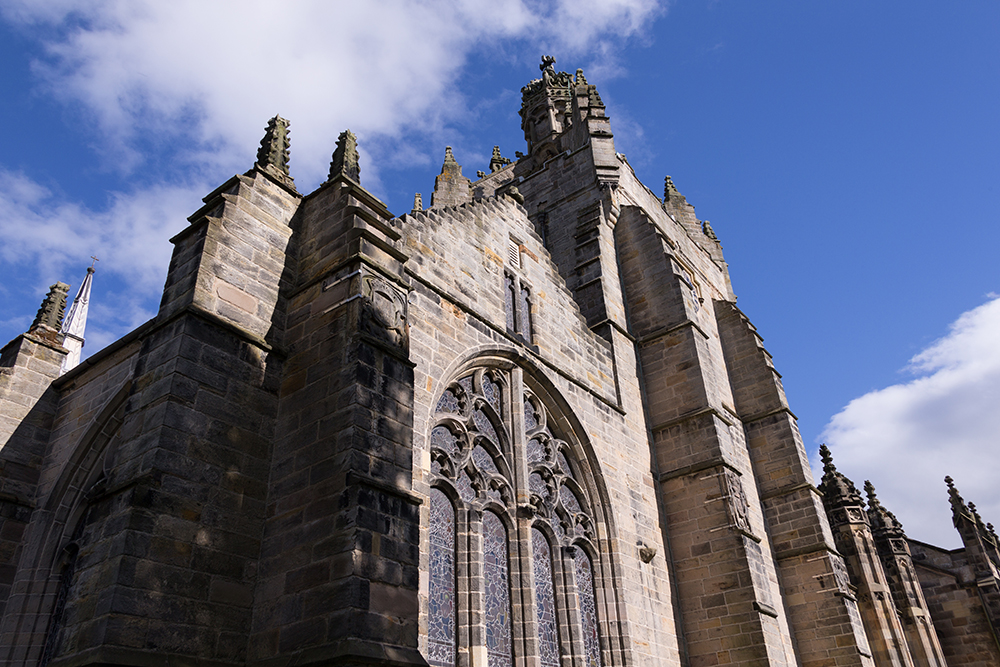
| ... although he regularly attended the meetings of parliament he continued with his episcopal duties, and maintained the fabric of the cathedral. Early in 1488 he was made Lord High Chancellor, but on the king's death in the following June he left office, and retired to Aberdeen. As a diplomat, his services were quickly required by the new king, James IV of Scotland, in whose interests he visited the kings of England and France, and the German king, Maximilian I, Holy Roman Emperor ... |
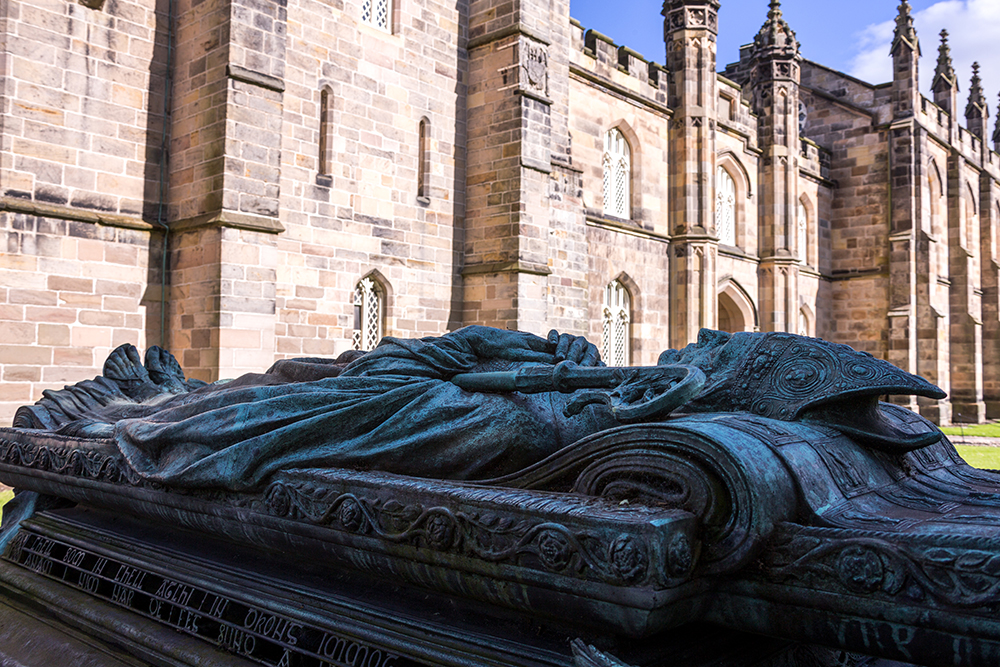
| ... having been made Keeper of the Privy Seal of Scotland in 1492, and having arranged a dispute between the Scots and the Dutch, Elphinstone's later years were mainly spent in the foundation of the University of Aberdeen. The papal bull was obtained in 1494, and the royal charter which made Aberdeen the seat of a university is dated 1498. A small endowment was provided by the king. The university, modelled on that of Paris and intended principally as a law school, soon became the most famous and popular of the Scots seats of learning, largely due to the prestige of Elphinstone and his friend, Hector Boece, the first rector. The building of the college of the Holy Virgin in Nativity, now King's College, was completed in 1506. Elphinstone also built the central tower of St Machar's Cathedral, and funded the building of the first stone bridge over the River Dee. Continuing to participate in public affairs he opposed the policy of hostility towards England which led to the Battle of Flodden in September 1513. He died in Edinburgh ... |
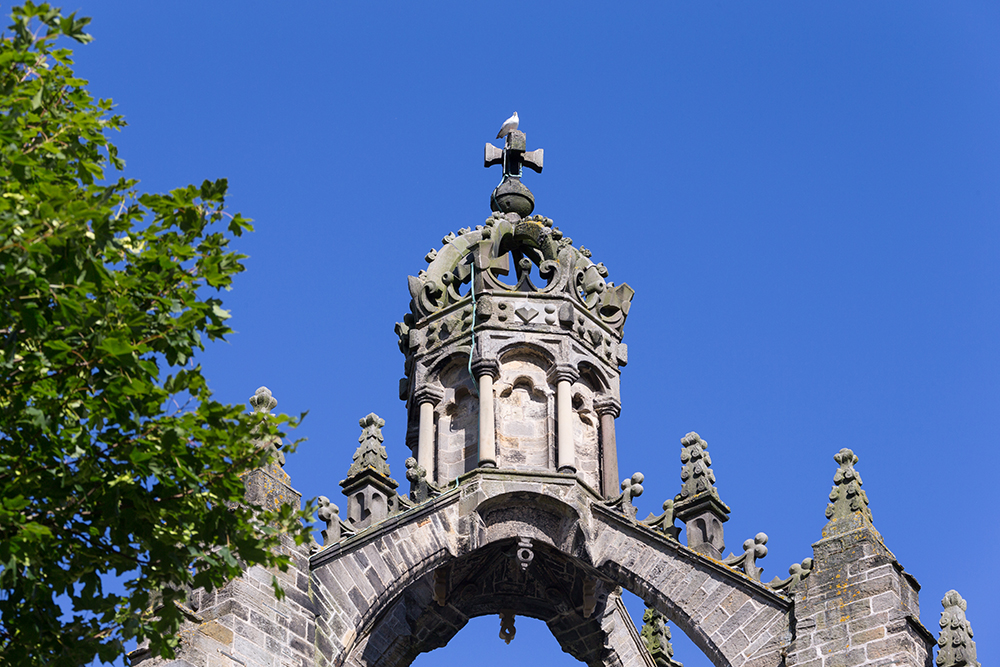
| ... the building work on the main buildings of the college began in April 1500 on marshy land, supported by large oak beams. The chapel is topped with an imperial crown, i.e. a closed crown, which appears to make a claim to imperial status for the Scottish monarchy. The original was lost in a storm in 1633, and the present crown is a recreation. King's College chapel retains more medieval woodwork than any other Scottish church, including the choir stalls and screen ...
Quelle: https://en.wikipedia.org/wiki/King%27s_College,_Aberdeen |
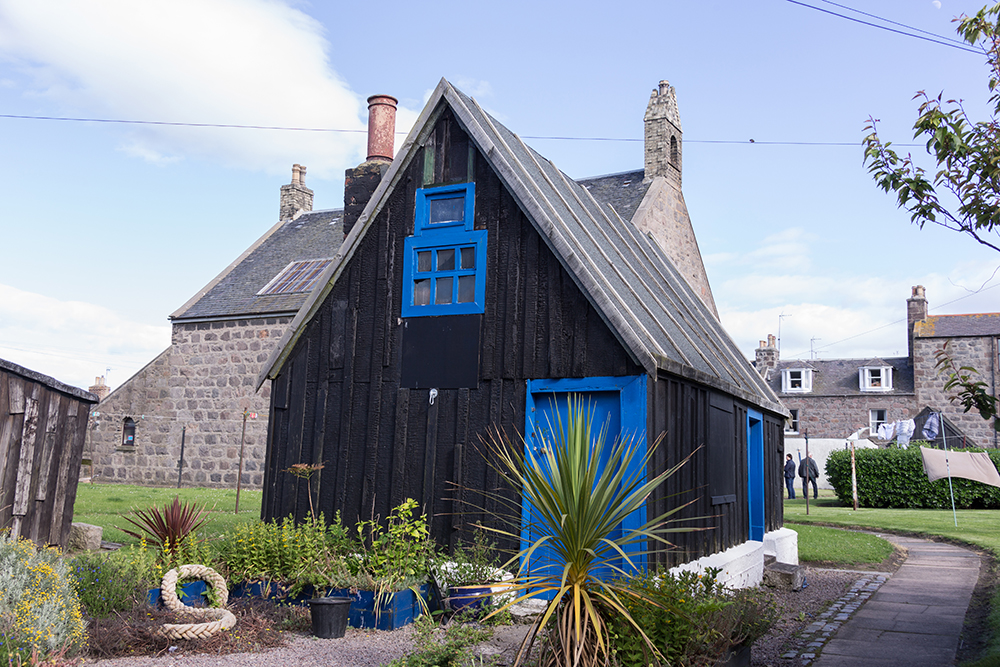
| ... Footdee is an area of Aberdeen, Scotland known locally as "Fittie". It is an old fishing village at the east end of the harbour. The name is actually folk etymology. Far from being Foot of the Dee/Fit o the Dee, it is actually a corruption of a former dedication to a St Fothan. The area has had a settlement as far back as the Medieval times and the first recorded reference to the area of Fittie was in the year 1398. This village was slightly further North than where Footdee is now located. It would have been near to where the St Clement's Church is located. The following is taken from Historic Scotland's Information Supplementary to the Statutory List ... |
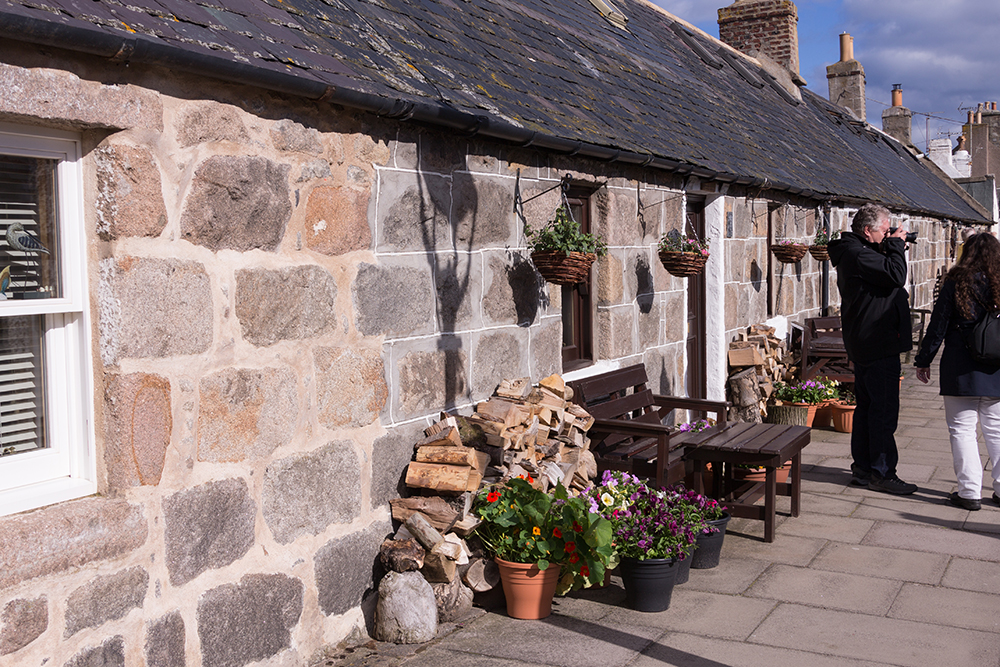
| ... the two squares of 'Fish Town' (known as Footdee), originally contained 28 single-storey thatched houses although this increased when the later Middle Row (circa 1837) and Pilot Square (circa 1855) were added. The entrances on each of the North and South squares were filled in the 1870s by William Smith (son of John and architect of Balmoral Castle). He also added additional storeys to the East and West sides of South Square creating a tenement feel. This was an attempt to ease crowding resulting from an influx of fishing families from other less prosperous areas and to help try to enforce the 'one-house-one-family' rule ... |
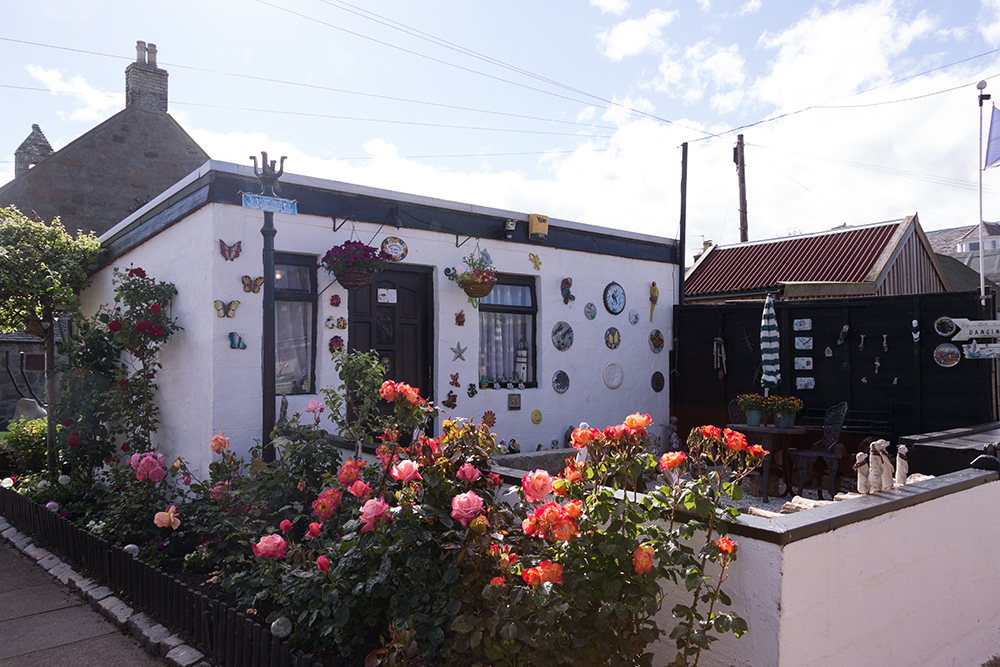
| ... hier geht alles und nichts – kunterbund durcheinander und oft wohl eher nicht bewohnbar ... |
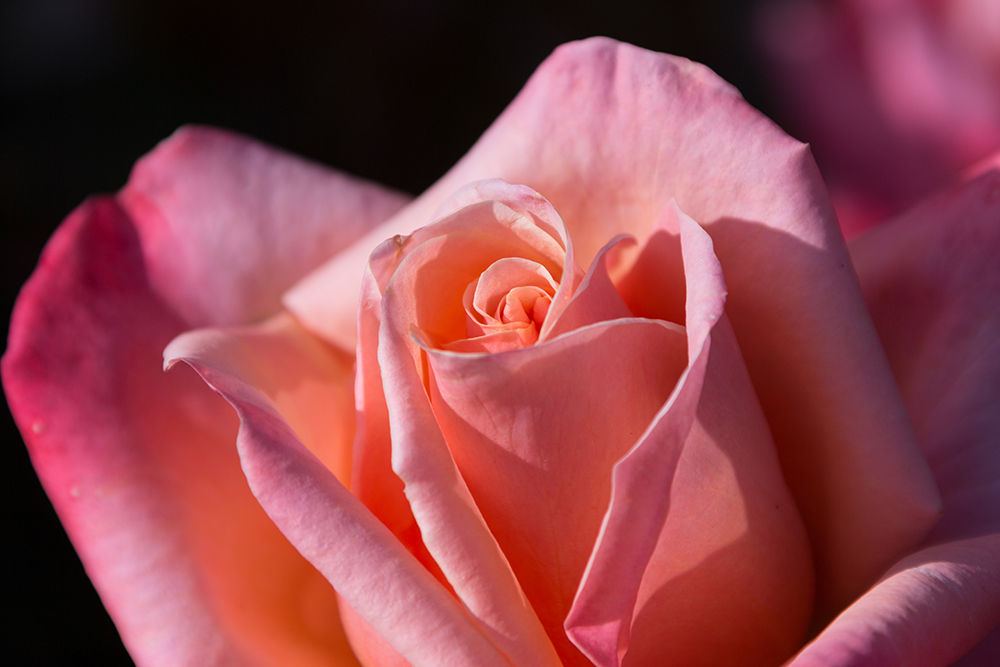
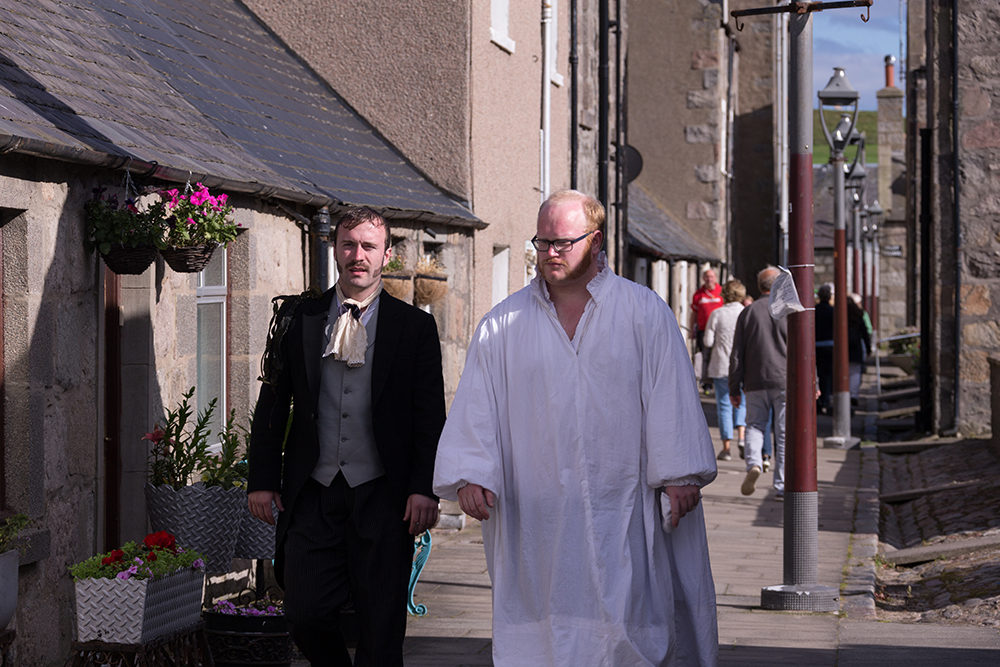
| ... ohne Worte ... |
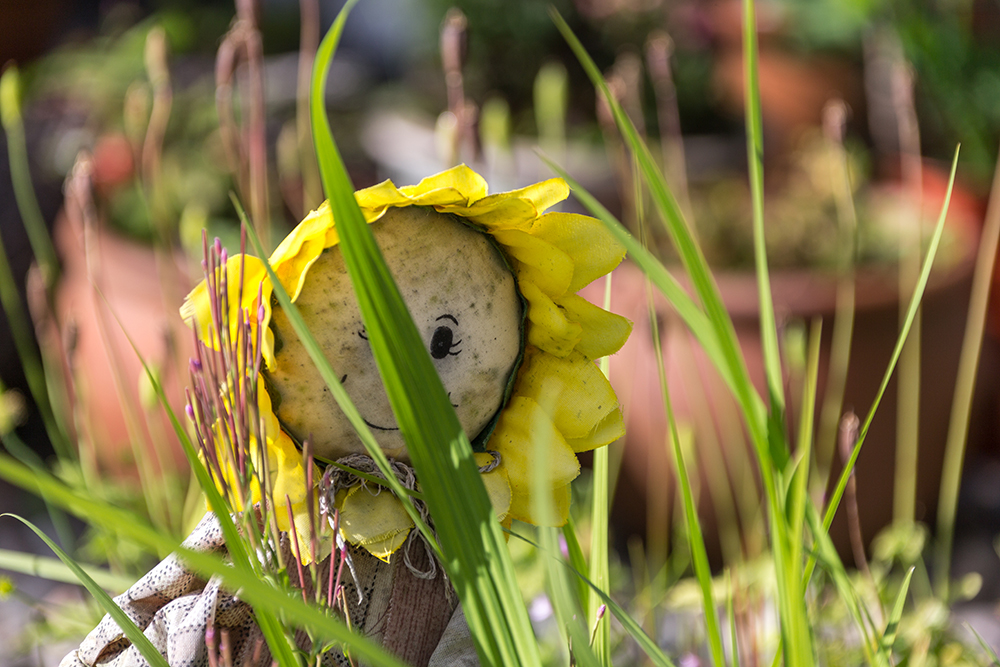
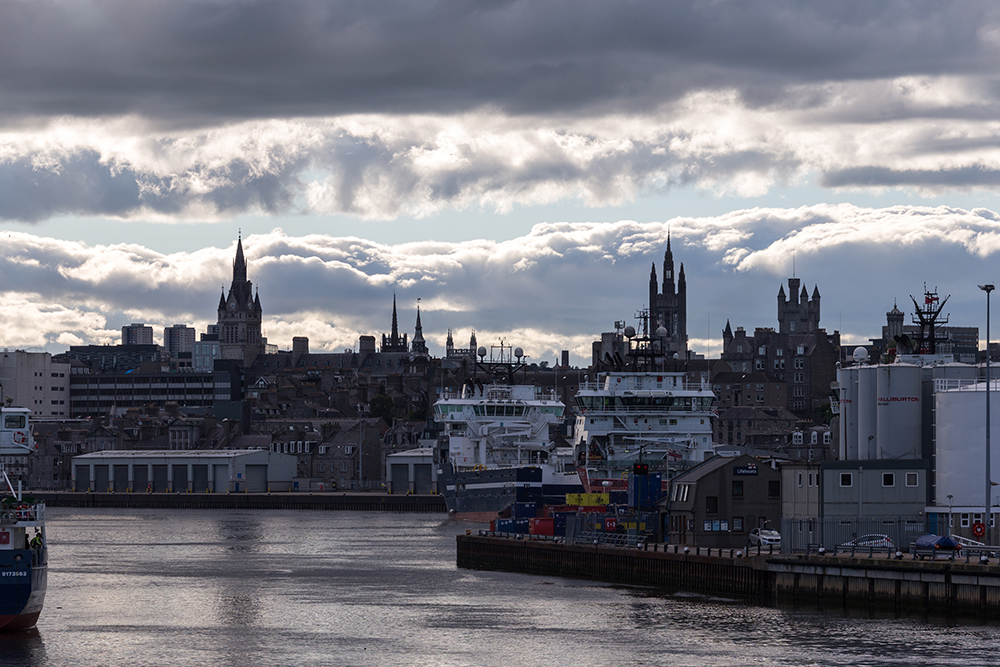
| >... und Tschüss – so ist das mit Kreuzfahrten: ein paar Stunden an Land, einmal kurz schnuppern und weiter geht’s ... |
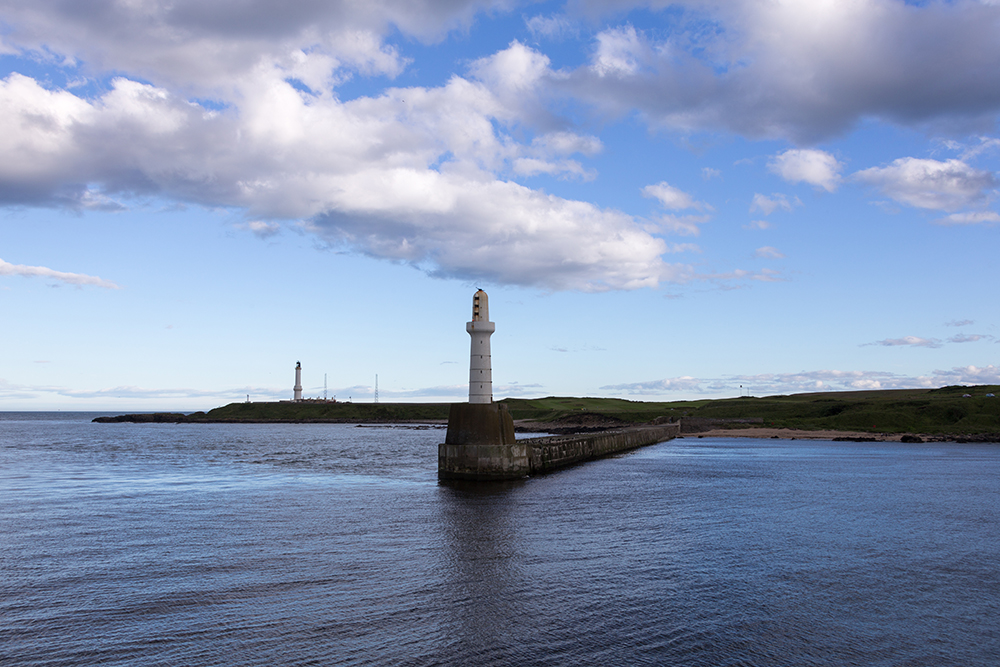
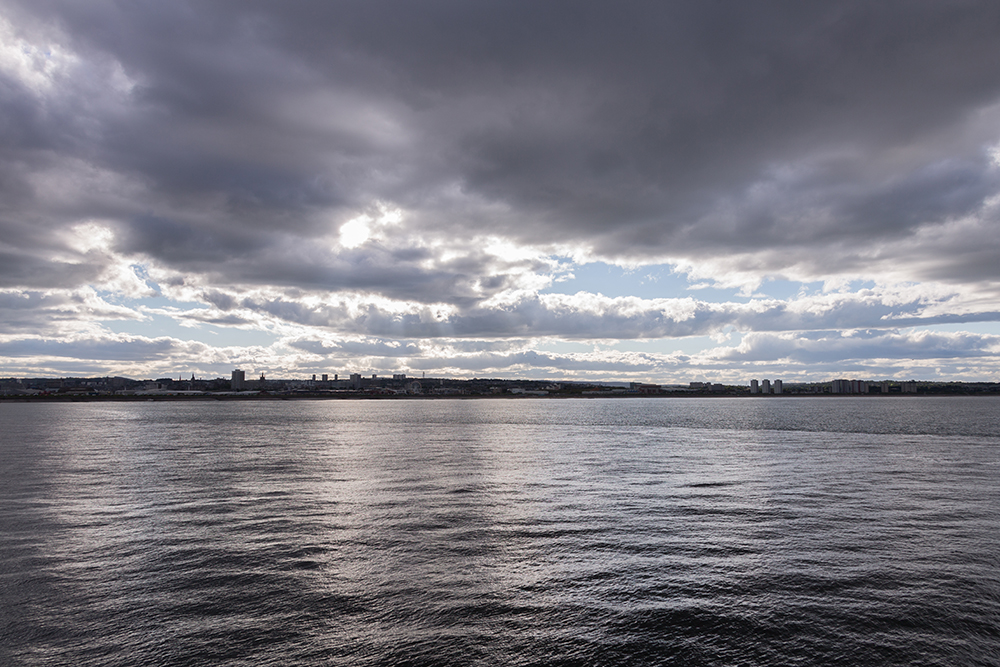
| ... die Wolken bereiten und auf jeden Fall einen spektakulären Abschied ... |
